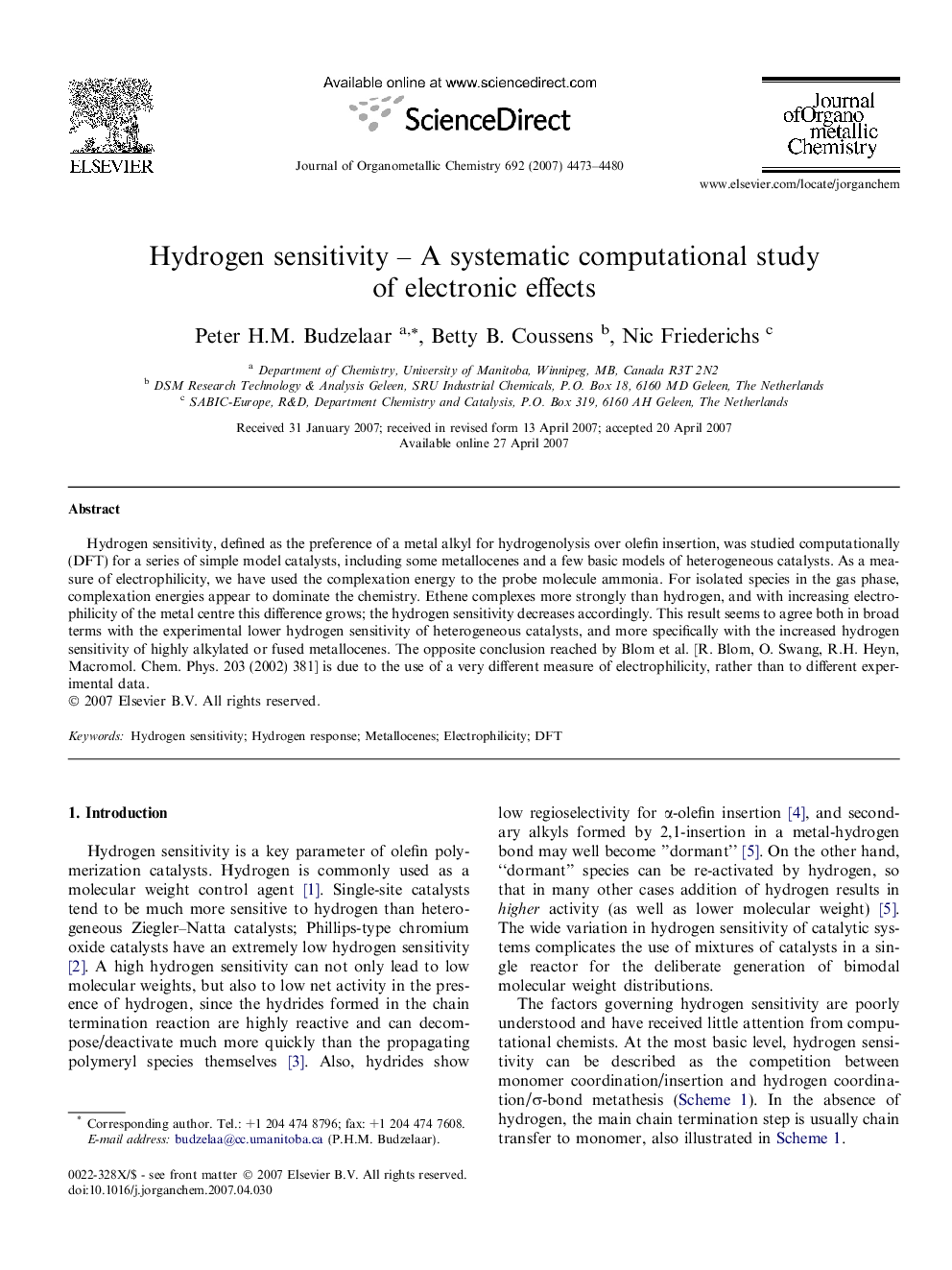| Article ID | Journal | Published Year | Pages | File Type |
|---|---|---|---|---|
| 1328200 | Journal of Organometallic Chemistry | 2007 | 8 Pages |
Hydrogen sensitivity, defined as the preference of a metal alkyl for hydrogenolysis over olefin insertion, was studied computationally (DFT) for a series of simple model catalysts, including some metallocenes and a few basic models of heterogeneous catalysts. As a measure of electrophilicity, we have used the complexation energy to the probe molecule ammonia. For isolated species in the gas phase, complexation energies appear to dominate the chemistry. Ethene complexes more strongly than hydrogen, and with increasing electrophilicity of the metal centre this difference grows; the hydrogen sensitivity decreases accordingly. This result seems to agree both in broad terms with the experimental lower hydrogen sensitivity of heterogeneous catalysts, and more specifically with the increased hydrogen sensitivity of highly alkylated or fused metallocenes. The opposite conclusion reached by Blom et al. [R. Blom, O. Swang, R.H. Heyn, Macromol. Chem. Phys. 203 (2002) 381] is due to the use of a very different measure of electrophilicity, rather than to different experimental data.
Graphical abstractDFT studies for model polymerization catalysts indicate hydrogen sensitivity decreases with increasing electrophilicity (measured as NH3 complexation energy) of the metal centre.Figure optionsDownload full-size imageDownload as PowerPoint slide
